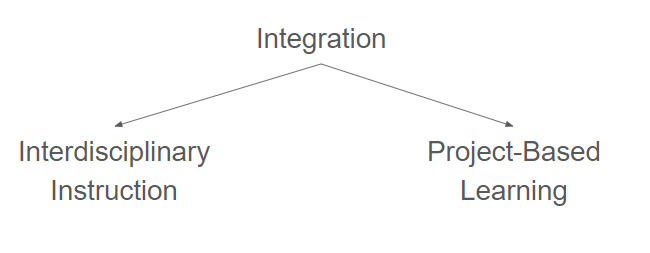What is STEM?
Aug 01, 2022
It should be simple, right? STEM is an acronym for Science, Technology, Engineering, and Mathematics. End of story.

However, there is no consensus definition for what actually constitutes STEM (or STEAM or STREAM) education.
Some programs claim to provide STEM education but are science labs similar to those students have been doing for decades. Others are more like art projects, perhaps with a technical or science theme, but without addressing any substantive or integrated content.
STEM = Interdisciplinary Instruction + Project-Based Learning
At the Excalibur Solutions STEM Academy, we view STEM education as an integrated approach that combines these subject areas through interdisciplinary instruction and project-based learning.

For example, a project to decorate a water bottle so it looks like a rocket is Art, but subjecting the students' water bottle rockets to wind tunnel tests, measuring their flight characteristics, and making modifications to the designs to improve some aspects of their performance is STEM.
A working definition for STEM
We like to use the following as a working definition:
An approach to education that requires students to apply concepts from Science and Mathematics while using or creating Technology to Engineer solutions to problems.
Note the use of engineering as a verb in this context. We consider the noun form to be specialized knowledge and skills that result primarily from the application of concepts from science and math.
If we treat physics as the intersection of math and science in an effort to understand phenomena in the world around us, then engineering is largely the application of physics to solve problems in various domains.
Where traditional approaches to pedagogy tend to treat individual subject areas as silos, STEM education seeks to dissolve the artificial boundaries. Projects in STEM education programs should create authentic and engaging contexts where students must apply skills and concepts from separate disciplines to solve problems like those they see in their everyday lives.
How are STEM subjects combined?
From this perspective, Science and Math supply the requisite knowledge and skills. Chemistry, biology, physics, algebra, trigonometry, geometry, and calculus are still important, and students must learn specific concepts from these subject areas. But they should learn them in context! Context provides purpose, and purpose provides motivation. How often do students ask, "When am I ever going to use this?" A project-based, interdisciplinary approach to STEM education provides ready-made answers.
Most people equate technology with computers, but we define it a bit more broadly. Technology is the set of tools students will use and/or create to help them solve problems. These include computers and the applications that run on them, but mechanical devices, even one as simple as a hammer, are also considered technology.
Again, thinking of Engineering as a verb rather than as a noun, it provides the process students will follow as they consider the problem, design and implement possible solutions, then test those solutions to gather feedback that can be used to refine and improve them. This is referred to as the Engineering Design Process, and is sometimes consolidated into Plan-Do-Review in educational settings.
To summarize, STEM is an acronym for Science, Technology, Engineering, and Mathematics. STEM education, though, is an interdisciplinary, project-based approach to learning where students apply knowledge and skills to solve authentic problems.
Stay connected with news and updates!
Join our mailing list to receive the latest news and updates from our team.
Don't worry, your information will not be shared.
We hate SPAM. We will never sell your information, for any reason.

